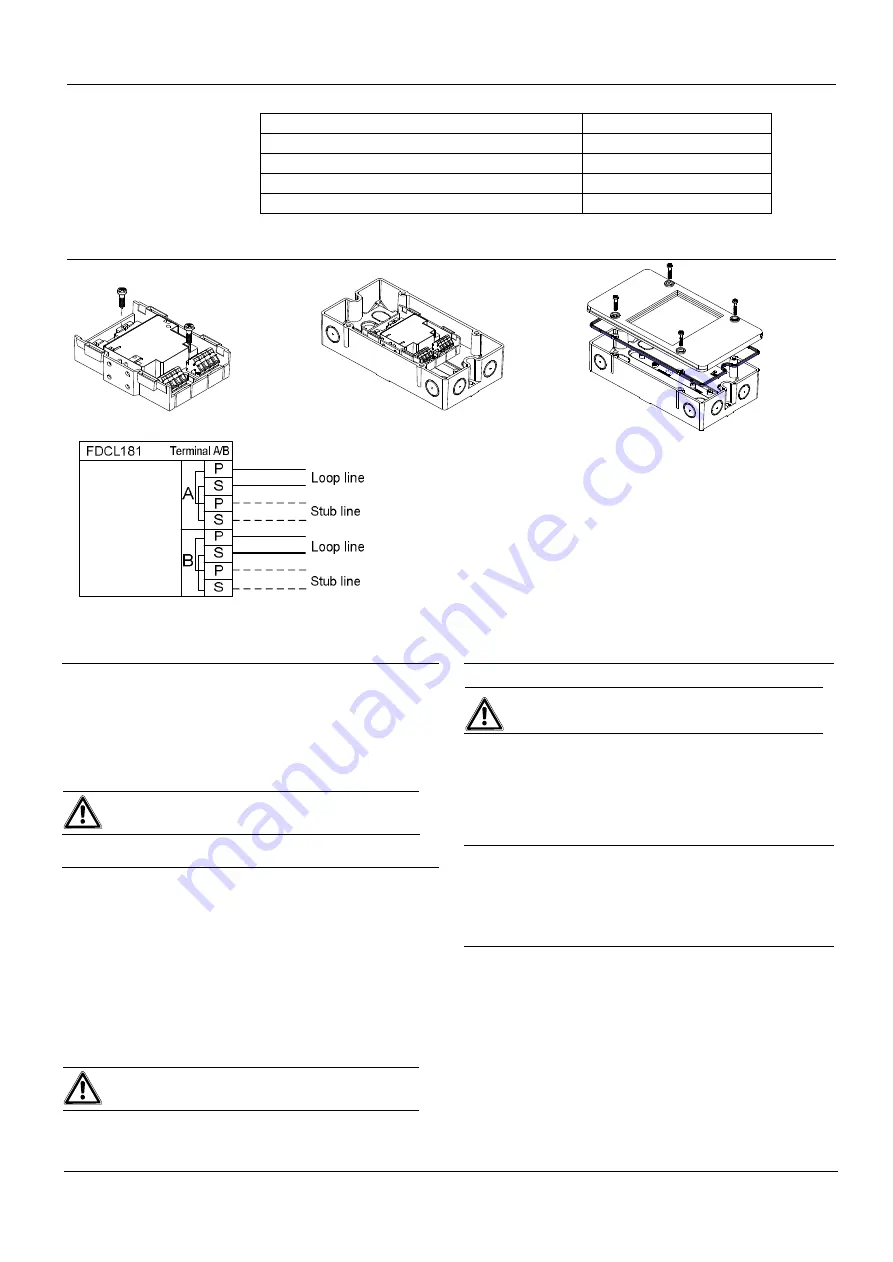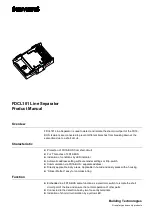
3
Building Technologies
A6V10214524_a_en_--
Fire safety and security products
03.2010
LED
indicator
The isolator has two indicators to indicate status of the two sides of the isolator.
Indicator
Meaning
Both off
Normal
Yellow LED at entry A flashing
Entry A isolating
Yellow LED at entry B flashing
Entry B isolating
Both flashing
Localization mode
Installation
Fig. 2
Fig. 3
Fig. 4
Fig. 5
Preparation
1.
Determine the type of installation: there are 2 types of
installation for FDCL181 isolator:
–
Installation outside a switching cabinet or a control unit:
use FDCH221 housing (Fig. 3) .
–
Installation directly in a switching cabinet or a control
unit: mount the module on an even surface (Fig.2).
Damage by water!
In humid or wet environments always use the housing
FDCH221!
Installation of FDCH221 Housing
1.
Open the housing.
2.
Determine the cable entries in the housing and break
these open.
3.
Use two screws (M 4) to fit the housing on a plane
surface (Fig. 3). Distance between holes: 182.0
±
1.0mm.
4.
Fix and guide in the cables with waterproof joint
(provided by users themselves).
5.
Fix the lid additionally with four screws (Fig. 4). (Only this
way is IP protection guaranteed.
)
The housing lid is transparent. Consider a suitable
installation position to make sure that the LEDs of the
module are visible at any time.
Installation of module in FDCH221 housing
Caution!
Overheating of FDCL81isolator.
1.
Open the housing.
2.
Fix module with two screws in the housing (Fig. 3).
3.
Press the module until it fits the housing.
Installation on an even surface
1.
Position module on an even surface.
2.
Fix module with two screws M4X15 (Fig. 2). Distance
between holes: 63.5
±
1.0mm.
Electric connection
1.
Connect the cables to the terminals according to Fig. 5.






















